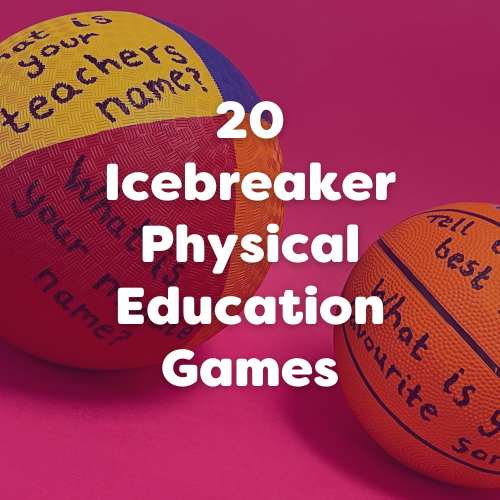Icebreakers can range from games and questions to creative challenges that bring children together. In this blog, we present 20 icebreaker physical education games that can help bring shy children out of their shells or break the ice with new groups of children as they get active and improve their overall health and fitness.
Read on for exciting ideas and new spins on old classics to build classroom connections and don’t be afraid to get silly, it’s all part of the fun!
1. Duck Duck Goose Name Chase
Based on Duck Duck Goose, this familiar icebreaker will help children memorise their classmate’s names as they play together. Start by gathering everyone to sit in a circle with one person as the tagger who walks around the outside, tapping each person on the head as they pass. In this version, the tagger calls out each person’s name as they tap their head and shout “GOOSE!” to pick the next player who tries to catch them before they reach the empty spot in the circle.
2. Bean Bag Tuff Tray Toss
Aim to win! Throw beanbags, hoops or balls at the Target Mini Tuff Tray Mat to see who can score the most points. This children’s game is perfect for practising fine motor skills and hand-eye coordination. Practice taking turns and building important numeracy skills by encouraging children to add up their points!

3. A Great Wind Blows
Start this icebreaker by having everyone sit on a chair in a circle, facing the middle with one less chair than the number of children playing the game. The person without a seat starts the game by saying “A great wind blows for everyone who…” followed by a characteristic such as “…walked to school this morning” or “…has a little sister”. If this statement is true for any players, they must stand up and race to find a new seat. Whoever is left standing becomes the next person in the middle.
4. Catch The Ball, Answer A Question
Write down a few get-to-know-me questions on a ball for children to take turns passing to each other in pairs or teams. For younger children who can’t read yet, try using different types of lightweight balls or beanbags and have them shout out questions instead for the catcher to answer.

5. Tug of War
Work together to succeed in a tug-of-war championship. This team bonding exercise is fun for all ages and encourages children to coordinate themselves as a group and help their teammates keep their balance as they pull the rope to win! Mark tape around the centre of the rope and at two points on the ground, a meter from the centre. The first team to pull the centre of the rope across their finish line wins the game!
6. Collaborative Splatter Painting
Take turns to create art while encouraging active play and physical exercise! Build communication and hand-eye coordination skills with this collaborative throwing activity using Tuff Tray Paper Pads and lots of paint-filled balloons. Each child can add different elements to the paper to create a shared work that can be hung up to display.

7. Group Skipping Challenge
Combine fun and fitness with a classic game of skipping to get the whole class jumping! Children can work together to improve their timing as they take turns to jump in. This icebreaker is easy to set up using a long skipping rope or by tying a few smaller ones together. Timing is key in this challenge so try singing skipping rope rhymes to help everyone keep the beat.
8. Parachute Games
Play parachutes are a versatile and popular resource for a variety of team bonding games. Here are 3 simple icebreakers to try in your setting:
- Shake hands: Every child is assigned a number which the teacher calls out in pairs. The two numbers run under the parachute, shake hands and introduce themselves before running back.
- Popcorn: Wave the parachute to bounce all the balls and create a popcorn effect. Increase the challenge by splitting the group into two teams. Team A tries to keep the balls on the parachute and Team B tries to bounce them off.
- Stay on the edge: Work together as a team to keep one large ball moving around the edge of the parachute without it falling off.
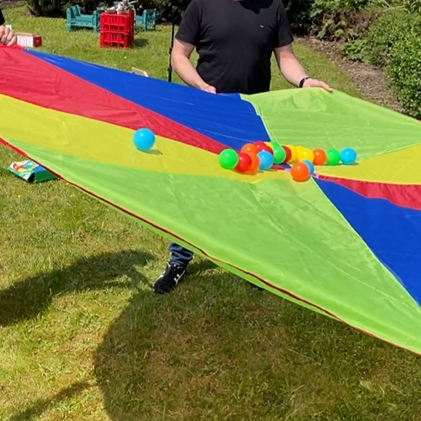


9. The Hula Hoop Challenge
Get the hula hoop from one end of the line to the other. Start with all the children standing shoulder to shoulder and holding hands to create a line. The first person in line must squeeze through a hula hoop for the next person to attempt without letting go of each other’s hands. This icebreaker is complete once all the children have made it through the hula hoop without breaking the line.
10. Don’t Drop The Balloon
Set up small teams of children with 2-4 players and see how long they can keep their balloon from touching the ground. In this team challenge, hand-eye coordination is key, so have an open space to move around and find out which team can keep their balloon up in the air the longest to win.
11. Obstacle Course
Build an obstacle challenge and time how fast each team can complete the course. This competitive activity is perfect for children to get to know each other as they cheer each other on and build self-esteem skills. Children can get creative using crates and wooden planks to set up elements to climb over and weave through.

12. The Line Up Game
Break the ice with new friends by playing the line-up game and learn fun facts about teammates. Divide the players into small teams of 5-10 and call out a quality or statement for the children to organise themselves in the right order. Statements can include:
- Please line up in order of height, the tallest first
- Please line up according to birthdays, starting from the beginning of the year
- Please line up in order of who arrived at school first today
After the group has finished lining up, ask them to go down the line and call out their answer. If everyone is correct, the game is complete. If not, take another chance to stand in the right order and try again.
13. Hopscotch With A Twist
Use letters instead of numbers for a fun game of hopscotch with a twist. Place the alphabet tiles in a hopscotch grid and throw a matching alphabet bean bag onto the corresponding square. Take turns with friends to shout out something that begins with the chosen letter (such as their favourite food or animal) then hop all the way down and back without the other foot touching the ground!

14. Seeing Spots
Shh! There’s no talking in this icebreaker where everyone is given a coloured sticker on their forehead and must find other players with the same colour. This team-building activity encourages non-verbal communication as children move around and find their group members, all without talking! Tweak this challenge to suit the class size and space by adding more colours to the game.
15. Den Making Challenge
Let imaginations run wild with a den-making challenge! Helping each other is the key to success in this icebreaker as children will need to work together to decide which sort of den they would like to build and then set off to fetch and carry objects. As well as encouraging physical movement, there is also the added benefit of applying problem-solving skills to work out the best ways to stretch out tarp and fix materials in place using ropes and clips.

16. Over Under Relay
Start by splitting children into small groups and asking each person in the group to line up behind each other. When the time starts, the first person passes a ball over their head to the person behind them who then passes the ball under their legs to the person behind them. Everyone in line alternates, bringing the ball over and under until it reaches the last person in line. This icebreaker encourages children to focus on their role in the team to help their group win!
17. Sponge Soak Up
Transfer water from a full bucket to an empty bucket placed a small distance away using only a single sponge. Begin by splitting players into teams and explaining the rules. The team that transfers the most amount of water before the time runs out will be declared the winners. This fast-paced icebreaker is a fun way to build healthy competition and self-esteem.
18. Outdoor Scavenger Hunt
Welcoming children to a new school or classroom offers an exciting opportunity to also discover a new outdoor environment. Motivate children’s natural curiosity by using our free scavenger hunt download to help children get familiar with their designated space. No matter how large or small the environment, there are plenty of opportunities to run, jump and play together and lots of minibeasts to discover!
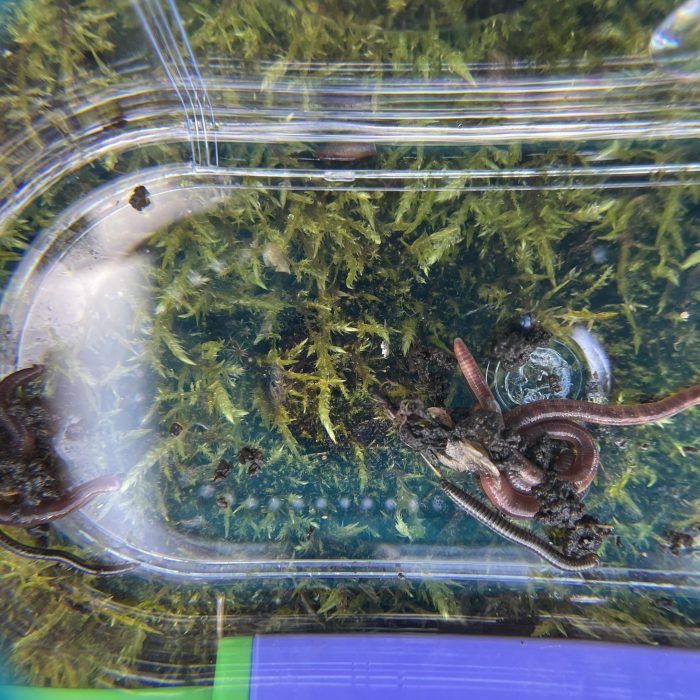
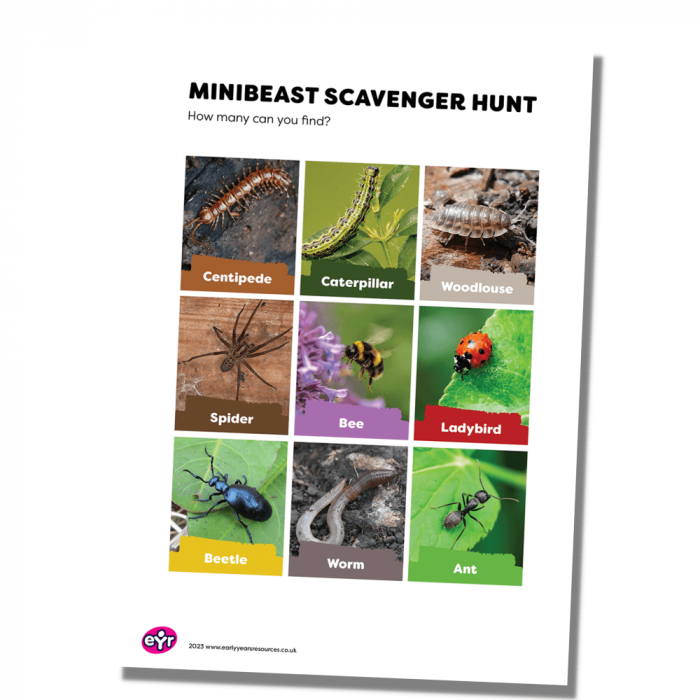
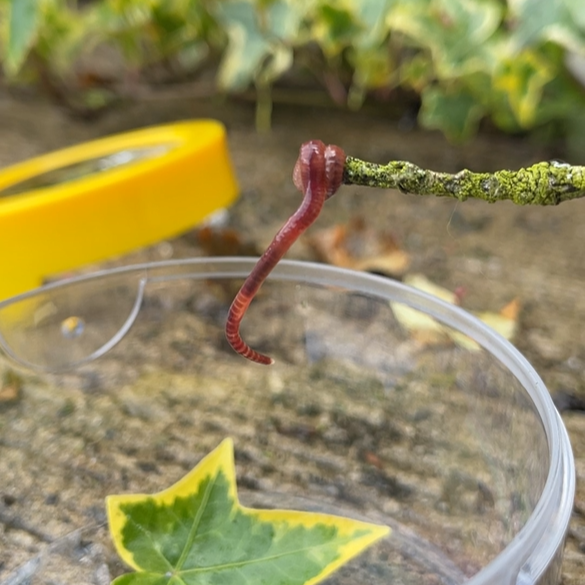
19. Human Knot
Gather children into a circle and ask each person to take turns putting their right hand into the circle and holding someone else’s right hand. Next, do the same with all the left hands to create a “knot” of arms to untangle without anyone letting go. This activity works best with smaller groups to practice listening and coordination skills as they bend, duck and twist to untie their knot as far as possible.
20. This or That
Get children up and moving with a game of This or That. Begin by splitting the room in half by setting a marker or an imaginary line and asking preference questions such as, would you rather have a pet dinosaur or a pet dragon? Pirates or robots? Invisibility or being able to fly? Children can move to the side of the room assigned to their preferred choice with the added option to elaborate on the reasons for their choice.
Don’t forget to regroup and reflect afterwards to share what the children have learnt about themselves and others. How did they work together? Did they share something new that other people might not have known?
We’d love to know how you get on with these icebreaker physical education games. Let us know which of these activities you have tried by tagging us on social media or using the hashtag #ExploreWithEYR.

